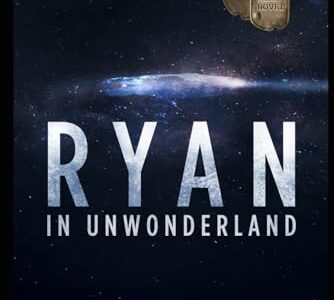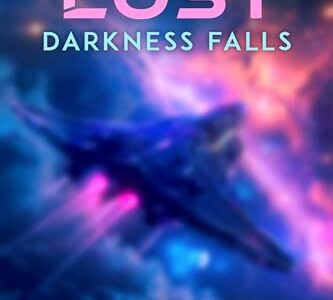Pros
- Engaging story about a human thrust across unknown distances and trying to find his way home that is a bit reminiscent of Star Trek Voyager‘s premise
- Eclectic cast of supporting characters and crewmen
- A kind of David vs. Goliath story
- Sentient space-faring vessel
Cons
- No real use of amazing futuristic technology
Homeworld Lost Review
Homeworld Lost by J. N. Chaney and Scott Moon is an fantastic collaboration on the start of an exciting adventure with Major Noah Gantz, a test pilot for United Earth, and his journey home.
The story begins innocuously enough: Noah is the second test pilot selected to test a new faster-than-light warp engine for Earth. He’s told that this second generation ship is mostly automated and that it’s bound to be successful compared to the failure of the first generation prototype that resulted in a death.
Of course, there’d be no real exciting story and adventure if Noah’s test flight goes as planned. What results is that Noah ends up somewhere in the far universe.
Luckily, despite the vast emptiness of space, Noah is picked up by a Kayan, a species of space-traveling sentient spaceship, and he is healed of what would have otherwise been fatal injuries. It turns out FTL travel in a what amounts to a tin can without adequate inertial dampeners can be deadly.
Noah finds himself rescued by a crew of eclectic aliens who all have their own reasons for being on Kayan. The basic premise will be fairly familiar for science fiction fans of the series Farscape , a popular science fiction television series aired around the turn of the century.
Like John Chrichton, Noah Gantz befriends this strange crew and sentient spaceship, and they get tangled up in an even larger mess that involves a vast, authoritative evil empire whose goal is conquest.
The action scenes in the story are fun, and the fact that the Kayan ship abhors weapons and violence means that most battles are face to face rather than across vast distances via laser weapons or missiles, though it’s difficult to see how long this idealism will last given their adversaries.
What the story does fairly well is to gradually introduce the individual members of the crew and their stories. With each revelation, the characters become more relatable and trustworthy, more familiar, and more like family—not unlike John and the crew of the Moya.
In fact, the similarities between Homeworld Lost and Farscape don’t quite end with just the premise, and fans of the television series may see other references or parallels, especially as the first book concludes.
Homeworld Lost by J. N. Chaney and Scott Moon is a fantastic start to what promises to be an exciting adventure filled with developing friendships, engaging battles, and perhaps a gradual expansion of the plot into a larger, more dangerous universe.
Read reviews of other fantastic science fiction books below.



